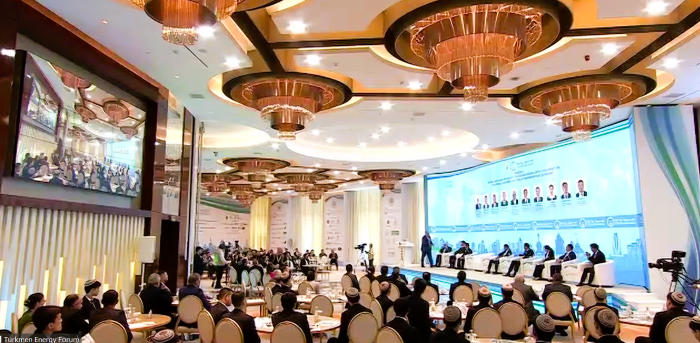In Turkmenistan, the French company Bouygues successfully adapts advanced international practices to local conditions, ensuring sustainable development and technological modernization. Our flexible management model enables the implementation of innovations that are genuinely in demand and yield results – whether in the field of labour safety, building energy efficiency, or process automation. We carefully choose solutions, avoiding so-called “innovation for the sake of innovation” that lacks practical application,” said Alexis Rechov, General Director of Bouygues Turkmen and Geographic Director for Central Asia at Bouygues Bâtiment International, speaking at the international conference “White City Ashgabat.”
Bouygues Bâtiment International is a recognized global leader in construction and infrastructure solutions. Since the 1970s, the company has created mobile and autonomous teams that successfully deliver projects worldwide.
In its projects, Bouygues actively employs digital technologies such as BIM, 3D modeling, and digital twins, as well as innovative construction materials and project management methods. These solutions reduce construction timelines, minimize waste, and improve work accuracy.
“We are confident that only such a considered approach – a combination of proven technologies and adaptive innovations – enables the creation of projects that meet client expectations, sustainable development requirements, and the challenges of the time,” Rechov emphasized.
Eco-Friendly Construction Materials
For three years, Bouygues has been using M400G20 cement in Turkmenistan, which has reduced CO₂ emissions and is produced in three cities across the country. This cement contains 20% mineral additives, including 15% basalt, a locally available resource. According to the Institute of Chemistry, this technology reduces CO₂ emissions by 20% (from 687 to 545 kg per ton of cement) by lowering the clinker content.
In collaboration with the Institute, Bouygues has developed the use of Opoka, a siliceous sedimentary rock with up to 98% silicon dioxide content. Opoka enhances concrete’s strength, water resistance, and sulfate resistance while further reducing the clinker share, cutting energy consumption and resource use. These innovations not only reduce the environmental footprint but also increase the durability of construction structures.
Focus on Safety
Bouygues places paramount importance on safety at all construction stages, from design to operation. The company has established a modern training center in Turkmenistan, where employees undergo training and skill enhancement. The use of advanced personal protective equipment and innovative technologies ensures safe and comfortable working conditions. A developed safety manual integrates best practices aimed at preventing incidents.
Education and Sustainable Development
Collaboration with Turkmenistan’s educational institutions is a key part of Bouygues’ strategy. The company organizes lectures, workshops, and educational programs for students and schoolchildren, introducing them to eco-friendly solutions and modern construction technologies. Bouygues supports startups, scientific research, and participates in conferences, sharing expertise in sustainable construction.
Today, Bouygues offers an impressive array of solutions for decarbonization and modernization of construction and industry. Here are some of them:
– OneClick LCA: A platform with an intuitive interface and powerful AI engine for lifecycle assessment and environmental product declarations. It ensures compliance with environmental standards, reduces costs through process automation, and promotes sustainable development. Example: A 62 kW solar station with 114 panels generates over 80 MWh of clean energy annually, reducing CO₂ emissions by 55 tons per year.
– HoloLens: Creates virtual building models, overlaying high-quality images onto real environments for 3D project visualization. In use since 2023, it enhances accuracy and efficiency on construction sites.
– LEICA (360° laser scanning): Provides high-precision and rapid surveys for design and construction, ensuring quality.
– HP SitePrint: Speeds up plan markup by 10 times and increases accuracy by 50% compared to traditional methods, effective indoors and outdoors.
– Revizto: A cloud-based platform for collaboration in architecture, engineering, and construction, integrating 2D/3D models, tasks, and real-time communications for timely project delivery.
– RDrive: A real-time quality control platform that records defects and incomplete work, ensuring compliance with Bouygues standards and adherence to timelines.
– SmartPM An AI-based project management platform that transforms static network diagrams (CPM) into dynamic real-time tools, providing deep insights into project progress.
– The AI-based SAV platform: A platform developed by Bouygues Turkmen for real-time project quality management. It systematically records all types of work, issues, lessons learned, construction standards, and key project milestones in real time. It leverages generative AI and Retrieval-Augmented Generation (RAG) technology, integrating structured and unstructured data (documents, notes, images) into a unified knowledge base. One of its advantages is improved data-driven decision-making and preventing recurring errors through systematized experience. ///nCa, 25 May 2025
